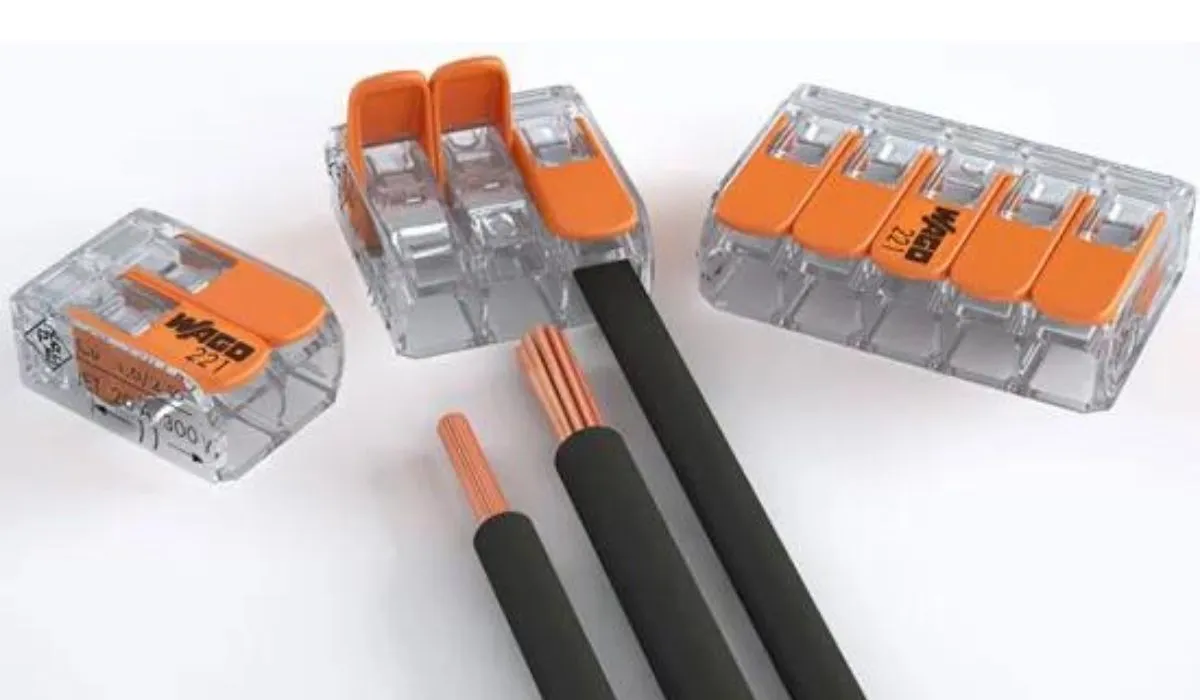The field of electrical connections is constantly evolving to improve usability, security, and efficiency. In this regard, the lever nut is one invention that has recently come to light. An innovative new way to join wires in electrical systems is the use of lever nuts, sometimes called lever connectors or lever wire connectors. This article delves into the complexities of lever nuts, discussing their benefits, uses, and influence on the electrical sector.
Understanding Lever Nuts: The Basics
A lever nut is essentially a little but strong tool that simplifies the process of connecting electrical lines. Lever nuts use a lever mechanism to keep wires in place, unlike standard methods like screw terminals or wire nuts. This design makes installation a breeze by doing away with the need for equipment.
Anatomy of a Lever Nut
Housing: Lever nuts have a sturdy housing that can be either see-through or opaque. Enclosing the internal components, its casing protects them from outside influences.
Conductive Elements: When the lever is pulled, a secure electrical connection is made by means of metal conductive elements located within the housing.
Lever Mechanism: The levers mechanism is what really sets lever snuts apart. You don’t need any extra equipment to insert or remove wires thanks to this system.
Advantages of Lever Nuts
Time-Efficient Installation
Quick and tool-free installation is made possible by the lever mechanism of lever nut. Because they reduce time during wiring chores, lever nut are a popular choice among electricians and do-it-yourselfers.
Reusability and Flexibility
Levers nuts are re-usable, unlike certain conventional connectors. Disengaging the lever makes it possible to remove and replace wires several times without damaging the connection. With this function, you have more leeway while making changes and troubleshooting.
Enhanced Safety
By lowering the possibility of unintentional wire exposure, levers nuts improve safety. Errors are less likely to occur due to the clear housing, which permits visual confirmation of correct wire insertion and connection. Also, the lever mechanism makes sure the connection is secure and won’t come undone from vibrations, so there won’t be any loose wires.
Applications of Lever Nuts
Residential Wiring
Because of its improved security and ease of use, lever nuts have become popular in residential settings. As a dependable and speedy method of joining electrical wires, they find widespread usage in light fixtures, outlets, and switches.
Industrial and Commercial Installations
Lever nut are great for commercial and industrial settings since they are efficient and can be reused. When speed is of the essence for large-scale projects, lever nuts can greatly simplify the wiring process, which in turn increases production and saves money.
Automotive Wiring
For those who work in or enjoy cars, levers nuts are an indispensable tool. Lever nut are tiny and secure, making them perfect for electrical repairs, car audio systems, and lights.
Challenges and Considerations
There are a number of complications that must be thought about while using levers nuts, despite its many benefits. Because of its bulk, levers nuts might not be the best choice for tight quarters. For best results, it’s also important to check compatibility with various sizes and types of wire.
Future Trends and Innovations
New developments in electrical connections are inevitable given the rate of technological advancement. Size, material, and compatibility are three areas where lever nuts are expected to undergo advancements. To keep up with the larger trends of the electrical industry’s Internet of Things (IoT), lever nut may also undergo an evolution that incorporates smart technology and networking characteristics.
Conclusion
Finally, when it comes to electrical connections, lever nuts have really changed the game. Their reusability, improved safety, and time-saving installation make them a popular choice for many different types of installations, from home wiring to commercial wire. Lever nuts are a prime example of how innovation has contributed to the ongoing evolution of the electrical sector by streamlining formerly complicated operations and increasing overall efficiency. Whether you’re an expert or a weekend warrior when it comes to electrical connections, harnessing the power of lever nut will revolutionize your approach.
Also Read: NEMA 5-15: Understanding the Standard Electrical Plug and Receptacle.
Frequently Ask Questions (FAQs)
What are lever nuts?
One novel way to join electrical wires is with lever nut, which are alternative names for lever connectors and lever wire connectors. The lever mechanism ensures that wires are held in place securely, eliminating the need for tools.
How do lever nuts work?
Inside a housing with conductive components, you’ll find a lever mechanism that makes up lever nut. All you have to do to connect wires is lift the lever, insert the wires, and close it. When the lever is closed, it locks the wires in place, making the electrical connection solid.
What are the advantages of using lever nut?
Installation Saves Time: No Tools Necessary and Installation Completed in a Flash.
Reusability: The connection can be undone and reattached numerous times, making the wires reusable.
Improved Security: Vibration-resistant connections and see-through casing for visual confirmation.
In what applications are lever nuts commonly used?
You can find lever nuts in all sorts of places, from home wiring (light fixtures, outlets, switches) to commercial and industrial installations, and even in cars for things like the audio and lighting systems.
Do-it-yourselfers can safely use lever nuts?
No, lever nuts are great for home improvement tasks. People without a lot of electrical experience should have no trouble installing them because they are reusable and don’t require any tools.











